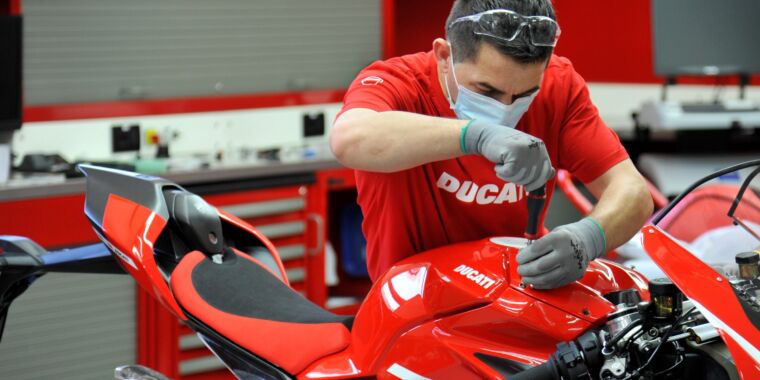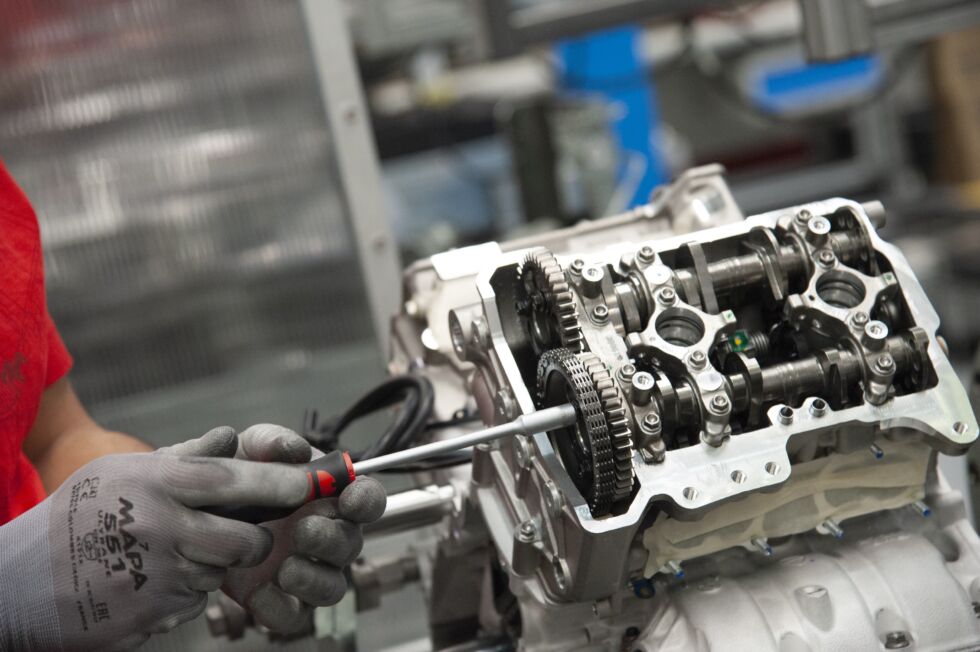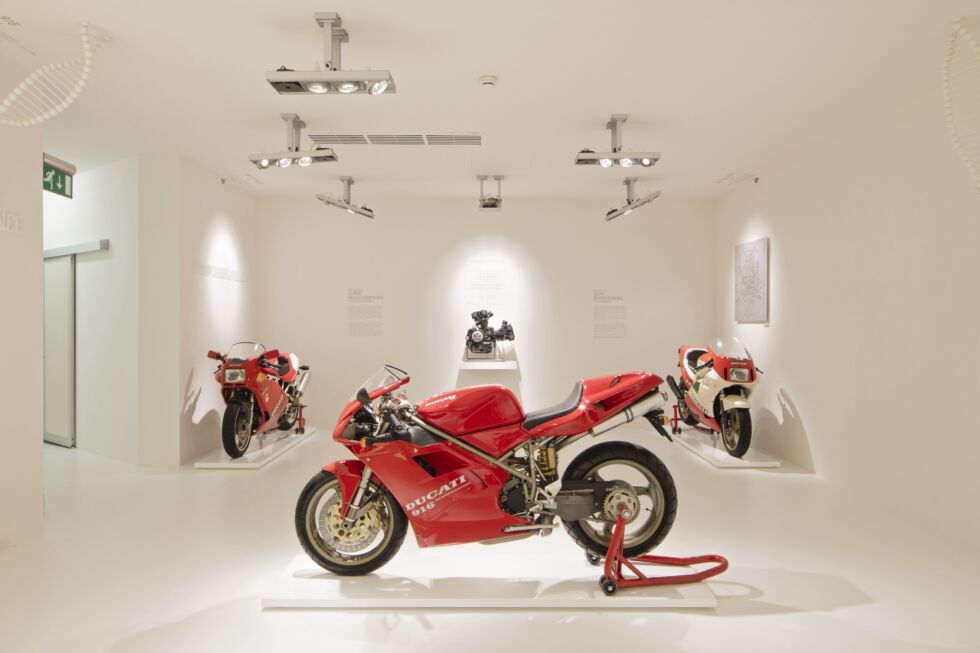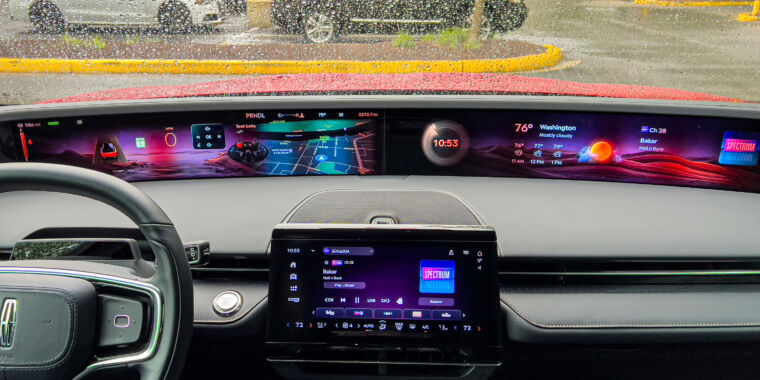Here’s how Ducati made its motorbikes reliable under VW Group

Ducati
BOLOGNA, ITALY—For decades, owning an Italian motorcycle required a tradeoff. On one hand, Italian bikemakers led the pack with gorgeous designs and the most exotic, highest-performing engines in the world. No other country could come close to matching the sounds and smells of a Ducati, Moto Guzzi, or Aprilia revving by. But build quality and reliability always presented a challenge for owners, not to mention parts availability and exorbitant maintenance costs.
Ducati arguably led the charge in every regard, setting a standard as the Ferrari of the motorcycle world with eye-catching Rosso Corsa red paint jobs to go along with real racing success in MotoGP and World Superbike thanks to famous—some might say infamous—desmodromic engines. However, In recent years under Volkswagen Group’s ownership, Ducati has made great strides in reliability and build quality, which explains to a large extent why 2022 was the firm’s most profitable year ever, with 62,000 bikes sold worldwide.
During a recent trip to Italy, I visited the Ducati factory in Bologna to learn how modernizing the production facility at Borgo Panigale helped improve the bikes built there over the decade since joining the Volkswagen group.

Ducati
A quick primer on Ducati’s infamous desmodromic valvetrain
The first stop after stepping inside the factory, where Ducati prohibits public photography, provided a helpful primer on the way that desmodromic engines function. A cutaway engine mounted on the wall demonstrated the physical movement of pistons within cylinders, as camshafts and crankshafts spun under simulated electric power. Essentially, desmodromic engines solve a flaw inherent to using valve springs, which provide the forces to open and close valves as the engine inhales gasoline and air, then combusts to produce exhaust.
In most engines, from basic commuters to high-performance hypercars, metal valve springs need to operate within a wide range of temperatures and at different engine RPMs. At those higher revs, though, the valve springs don’t move faster—and in fact, metal softens with heat, meaning that the springs will provide less rebound force onto the valves when hot. Advancements in camshaft profiles and electronic timing can help to improve performance at the top of the rev range, but only to an extent limited by immutable thermodynamics.
As the fake engine on the wall showed, the desmodromic system does away with springs, instead using a solid rocker arm or arms pushed by lobes on the camshaft to perfectly time the opening and closing of intake and exhaust valves. The system can therefore move more quickly as revs ramp up while also avoiding almost all of the potential softening due to heat. Ducati isn’t the only company to use desmodromic valves, which were invented in the mid-1800s and even showed up in Mercedes-Benz’s iconic “Silver Arrow” Formula 1 cars in the 1950s.

Ducati
The desmodromic system isn’t a panacea, though, and it comes with its own inherent challenges, too. The solid rocker arms and rotating cam lobes do create more friction than valve springs, which increase wear on these solid components that need to stay within microscopically tight tolerances to perfectly time the valvetrain. Hence the longstanding fear among motorcycle aficionados that desmo Ducatis require frequent valve clearance checks, historically as often as every 5,000 miles (8,000 km).
For racing on the world stage, when high-RPM performance is most critical but long-term reliability is perhaps less so, desmodromic valves gave Ducati a competitive edge (though most MotoGP bikes now use pneumatic-hydraulic valve systems). But for anyone who regularly rides a motorcycle for a daily commute or even weekend fun, those short intervals before a desmo-equipped bike required an expensive and time-consuming service made Ducati motorcycles a tough sell.
In the modern era, Ducati’s improved metallurgy and manufacturing processes allow for up to 18,000 miles (29,000 km) between valve clearance checks—even for an engine as radical as the new Hypermotard Mono’s 659 cc Superquadro engine, the most powerful single-cylinder ever with output rated at 77.5 horsepower (57.8 kW). (Note, however, that 18,000-mile interval still pales in comparison to the 36,000 miles recommended for Ducatis that use “traditional” valve springs.)

Ducati
As we turned away from the Desmodromic display, I now knew what to keep an eye on in the factory to more fully comprehend what, exactly, has changed over the years.








